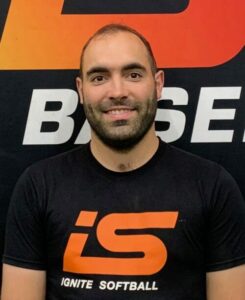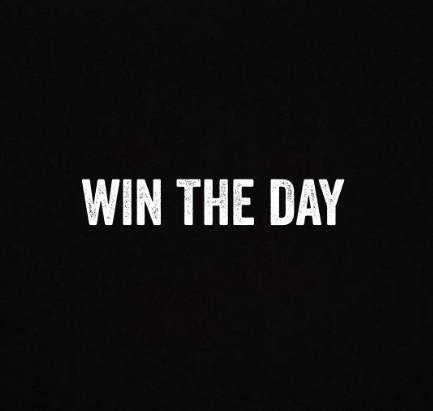The hardest thing about being successful is the choices that people are forced to make. It’s something that I see athletes struggle with all the time. Throughout an athlete’s time working with us I like to ask them “What are your long term goals?” Sometimes I hear I want to play in college, sometimes I hear I want to play division one in college, and sometimes I hear I want to play in the major leagues. It’s awesome for kids to have dreams and I encourage athletes to set goals and work towards them. After all, we ask every athlete that we train to imagine who they could become.
With that said, it’s important to point out that what typically gets in the way of their dream is, an athlete not prioritizing their training once they get to high school. Classes get hard, your travel team has practice, you’re trying to do extracurricular activities to make your college résumé better, you are binge watching the office or some other show, and you’re spending time on Instagram and TikTok. Somehow, all of these things have time carved out for them and training falls by the wayside.
I’m going to say something that may be controversial to some, but I don’t care. Team practices are designed to make the team better, rarely as a team practice designed in such a way where the athlete gets better at playing baseball or softball. All the time athletes tell me that they practiced their swing at their team practice and my response always is that doesn’t count. Unless you did it focused in a way where I could be deliberate practice, it does not help you hit better.
Also going to a team practice is not going to physically prepare you for the demands that high-level baseball and softball puts on you. You need to work you! And you need to work out in a way that prepares you to be able to rotate powerfully.
I wrote an article a couple weeks ago where I interviewed Aaron Tarr a division one college coach at Mount Saint Mary’s University in Maryland where he essentially said that skill work without explosiveness is useless for him at the division one level. Below is the audio of the actual interview.
If you want to read the article here it is. Click here to read it.
The bottom line is if you want to play at a high-level, you need to find time to get your work in. I don’t always love Nick Saban, but he did an interview in 2016 and that spoke to this well. View it below.
When it comes to being a great athlete choice truly is an illusion, if you want to be good at something it takes, what it takes.
I was recently reading this article by James Clear the author of “Atomic Habits.” And he was telling a story about Warren Buffett that align with what I’m saying in this article so I’m just going to paste it here.
This is James Clear’s work below
“The Story of Mike Flint
Mike Flint was Buffett’s personal airplane pilot for 10 years. (Flint has also flown four US Presidents, so I think we can safely say he is good at his job.) According to Flint, he was talking about his career priorities with Buffett when his boss asked the pilot to go through a 3-step exercise.
Here’s how it works…
STEP 1: Buffett started by asking Flint to write down his top 25 career goals. So, Flint took some time and wrote them down. (Note: you could also complete this exercise with goals for a shorter timeline. For example, write down the top 25 things you want to accomplish this week.)
STEP 2: Then, Buffett asked Flint to review his list and circle his top 5 goals. Again, Flint took some time, made his way through the list, and eventually decided on his 5 most important goals.
Note: If you’re following along at home, pause right now and do these first two steps before moving on to Step 3.
STEP 3: At this point, Flint had two lists. The 5 items he had circled were List A and the 20 items he had not circled were List B.
Flint confirmed that he would start working on his top 5 goals right away. And that’s when Buffett asked him about the second list, “And what about the ones you didn’t circle?”
Flint replied, “Well, the top 5 are my primary focus, but the other 20 come in a close second. They are still important so I’ll work on those intermittently as I see fit. They are not as urgent, but I still plan to give them a dedicated effort.”
To which Buffett replied, “No. You’ve got it wrong, Mike. Everything you didn’t circle just became your Avoid-At-All-Cost list. No matter what, these things get no attention from you until you’ve succeeded with your top 5.”
The point is, that if you want to be great at baseball or softball, if you’re athletic you’ll probably be able to move the needle and at least become pretty good if you work hard. But if you have 24 other goals that you’re trying to accomplish, you’ll never reach you potential. Many times, how good you are lies in the things that you say no to and not the things that you say yes to.
Let’s walk through the typical schedule of a High Schooler.
| 7am wake up |
| 8am-3pm School |
| So essentially once you hit 3 PM you have about seven hours before your head hits the pillow if you want to get a good night’s sleep. |
| 2 Hours of homework |
| So now we have 5 hours left |
| 1.5 hours of team practice |
| Now we have 3.5 hours left |
| Let’s pencil in 1 hour of transit to get to and from practice or what ever after school activity you do that day. |
| 2.5 hours left |
| .5 hours for dinner |
| So now you’re left with 2 hours remaining |
| So the real question Is what do you do with that 2 Hours |
This 2 hour window, is where your true choice of a high school athlete lives.
If you’re not utilizing at least one of the remining hours to put in work in, then you can’t be surprised if you don’t perform well.
You don’t need to use up that entire 2 hours training, but you need to punch the clock and put in for an hour or so every day. Whether that be working out, skill training, throwing. How often you do things and what you do specifically is something that we as a staff can help you figure out. But you need to start by aiming to do something for at least an hour a day.
Most of the division one or pro athletes that we have trained are freight trains. This is the label that I use to describe an athlete who is dead set on reaching their goal and moves like a freight train in the direction that they’re aiming for. As trainers, freight trains are amazing to work with, because we don’t have to work on changing behavioral patterns for them to reach their goals, we just need to change what they’re doing when they are training. For us, that’s easy, it escapes me where I heard this quote, but I read somewhere that there are three types of people; those who are self-motivated, people who can be motivated, and people who are not motivated. If you’re an athlete and you’re reading this article I want, you to ask yourself which type are you?
Are you a freight train that will go in the direction of your goal no matter what? Or do you need to be pushed externally? If you need to be pushed, that’s fine, but eventually you want to convert that push that’s coming from the outside to a push that’s coming from the inside. Only those who are tremendously gifted genetically play at high levels without being self-motivated and disciplined.
The bottom line is, if you want to be a great athlete, you need to focus your time on your craft, and that is almost impossible to do if you’re trying to do 20 other things. In the book Heads Up Baseball by Dr. Ken Ravizza and Dr. Tom Hanson, they describe your future as the sum of many todays. If you try you best to win every day and every moment your long-term goals will take care of themselves as long as you daily actions are aimed in that direction. This approach also allows for athletes to approach each moment in a healthy way. If you go into each game and practice with this idea that you must be a division 1 player, you’ll stress yourself out so much that your performance will suffer. On the field, all we can do is try to win every pitch, off the field all we can do is try to win every moment.
Thanks for reading,
Kurt Hewes, CEO of Ignite Baseball

If you’re struggling to find time in your schedule to work out, we can help with that. Our 4-week training plans are designed to target specific parts of your body, that are the limiting factor on how hard you hit the ball the best part about the plans is they require minimal equipment to execute, and it can be done in the comfort of your own home.
If you’re an athlete that does not live near Ignite click here to learn more.
If you already train with Ignite and wants to start our four week training plans at home click here to learn more.
If you live near Ignite, and want to get started with online training, we recommend doing an initial evaluation first. You can sign up for that by clicking here.


Good stuff.